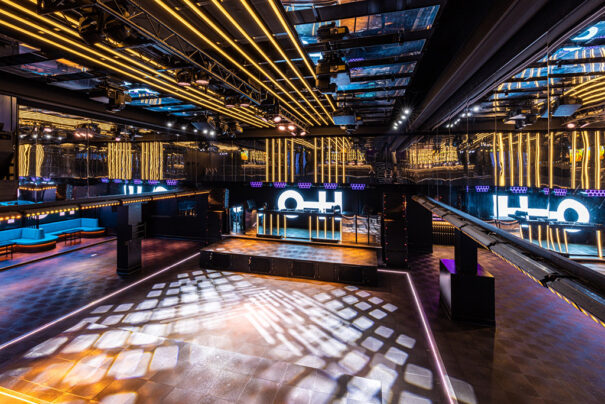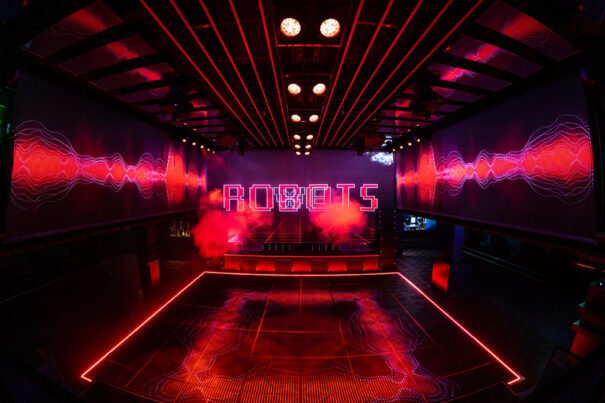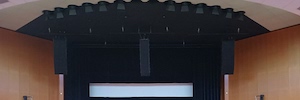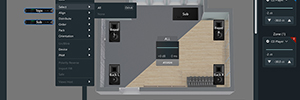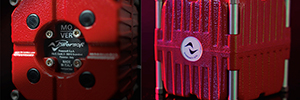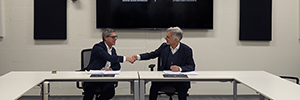Powersoft Mover helps tell the story of electronic music with an immersive experience
En el museo y club nocturno Our House have been installed 64 transductor Powersoft Mover, alimentados por cuatro amplificadores Quattrocanali 4804 DSP+D.
The compact transducer Powersoft Mover se ha instalado en el corazón de la inmersiva experiencia realizada en el museo de música electrónica de baile y club nocturno Our House.
Situada en el barrio de Rembrandt en Ámsterdam, Our House ha sido una próspera discoteca y el corazón de la escena de la música electrónica desde la década de los 80. El emblemático local ha mantenido su legado musical convirtiéndose en un museo de narración digital, que promete un viaje de 75 minutos por el género musical, a través de exposiciones interactivas, espectáculos y actuaciones. Cuenta la historia sobre cómo la música electrónica, que en su día fue una escena underground rebelde y reservada, ha evolucionado hasta convertirse en un fenómeno cultural mundial.
“Cuando llegamos aquí, hace unos dos años, el lugar era muy analógico. Había un sistema de sonido, luces estroboscópicas, una máquina de humo y algunos Led. Eso era todo”, Explains Jeroen Jansen, director general de Our House. “Queríamos reconstruir el club con instalaciones que pudieran contar la historia de más de 40 años de música utilizando tecnología mixta. Para renovar el local y llevarlo a un nivel completamente nuevo, recibimos apoyo de la industria, incluido Powersoft”.
Por la noche el local es un club nocturno, el Club Air, y por el día, comparte el mismo espacio con los visitantes del museo. La potencia de los amplificadores y del sistema Mover se utiliza para conectar visualmente con el contenido del video en el museo, mientras que por la noche las frecuencias más bajas se intensifican en la pista de baile para acentuar la música y la línea de bajo.
Jansen pidió consejo a los ingenieros de Powersoft para evaluar el número de sistemas Mover que serían para soportar la estructura de la pista de baile que tenían en mente; el suelo de doble capa tenía que soportar 100 personas y 12 toneladas de peso.
Optaron por 64 Move, el transductor lineal compacto de Powersoft, alimentados por cuatro amplificadores Quattrocanali 4804 DSP+D. El versátil equipo puede fijarse a un gran número de objetos y estructuras, como sillas de juego, asientos de locales de ocio, paneles de pared y, In this case, debajo de la pista de baile de doble capa.
“Se nos ocurrió la idea de involucrar activamente todos los elementos técnicos que se asocian a la música electrónica, como la luz, el vídeo, Laser and special effects. Queríamos que el movimiento de debajo de los pies de la gente formara una experiencia completamente inmersiva, creada por un sistema de contenido de código de tiempo”, afirma Jansen, que se refiere al contenido específicamente diseñado como “el conector de todos los puntos, que une toda la tecnología en puntos musicales, como cuando el ritmo cae o el crescendo musical”.
La construcción del ‘doble suelo’ consiste en una superficie hidráulica, que puede deslizarse hacia arriba y hacia abajo 20 cm, y el suelo secundario en la parte superior. Este último tiene el 64 Mover acoplado, uno a cada panel del suelo, de modo que se puede sentir dondequiera que la persona esté de pie.
Jansen atribuye a su pasión por la música electrónica el impulso para crear este museo experiencial, que rinde homenaje a los ‘protagonistas’ (DJs, bandas y productores icónicos, como Daft Punk, Carl Cox y Diplo) que ayudaron a crear una experiencia única. “Era muy importante para nosotros crear una experiencia de realidad virtual completa, No glasses, en el punto culminante del viaje de los visitantes. De ahí surgió la idea de una experiencia háptica: vincular toda la tecnología con el movimiento, para que todo funcionara en armonía”.
El integrador de sistemas Lagotronics trabajó en colaboración con Our House para desarrollar el sistema de suelo hidráulico de ‘caída libre’, que no sólo vibra sino que cae hacia abajo. “Añadimos un elemento especial que nadie espera, por lo que resulta bastante impactante para la gente cuando está aquí “, añade Jansen.
El diseñador creativo del sistema de audio, Joshua Dutrieux (JDX Music), fue contactado por Jansen y Fourmation, su empresa de entretenimiento, con el encargo de crear algo que nunca se hubiera hecho antes y que hiciera del museo de la danza algo realmente memorable.
You liked this article?
Subscribe to our Feed And you won't miss a thing.



